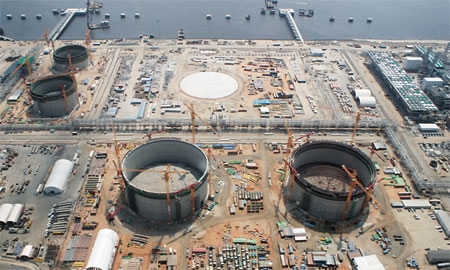Today, Angola is Africa’s largest oil producer, recently surpassing Nigeria, and the country is without a doubt one of the world’s deep-water oil exploration hot spots. More than 50 significant discoveries made in Blocks 14, 15, 17 and 18 are believed to contain at least 10 billion barrels of oil.
Not surprisingly, along with mining, Angola’s energy sector is a key driver of the country’s economy. The two sectors continue to generate some 90% of government revenues despite ongoing diversification efforts.
In recent years, record oil prices and heavy global demand have led to double-digit growth (between 2002-2008 growth averaged 12.3%, leading to an increase in real income per person of 11%, and subsequently lifting thousands of Angolans out of poverty). Also significantly, the recent energy boom has meant massive public investment in infrastructure and agriculture.
Yet all of this has taken place without the contribution of Angola’s natural gas. Angola is now diversifying from oil into gas, and some analysts believe that gas could have more potential for the country than oil. Indeed, Chevron, Angola’s largest producer of crude oil, has said it is now shifting its focus to natural gas.
According to Oil & Gas Journal, Angola’s estimated gas reserves, which were estimated at 2 trillion cubic feet in 2007, are now as high as 11 trillion cubic feet, placing it in sub-Sahara’s top position for total gas reserves. The benefits of liquefied natural gas, which is expected to come on line next year, will therefore be broad for the country.
The United States is well placed to benefit from both Angolan oil and gas. As mentioned, Chevron and ExxonMobil are two of the three largest oil operators in the county (France’s Total is the third), and in fact, 90% of Angola’s oil exports go to just two countries – China and the U.S.A. This energy-based relationship has expanded in recent years to include sister city relationships between Lafayette, Louisiana and Angola’s Cabinda, and between Houston, Texas and the Angolan capital of Luanda.

0 COMMENTS